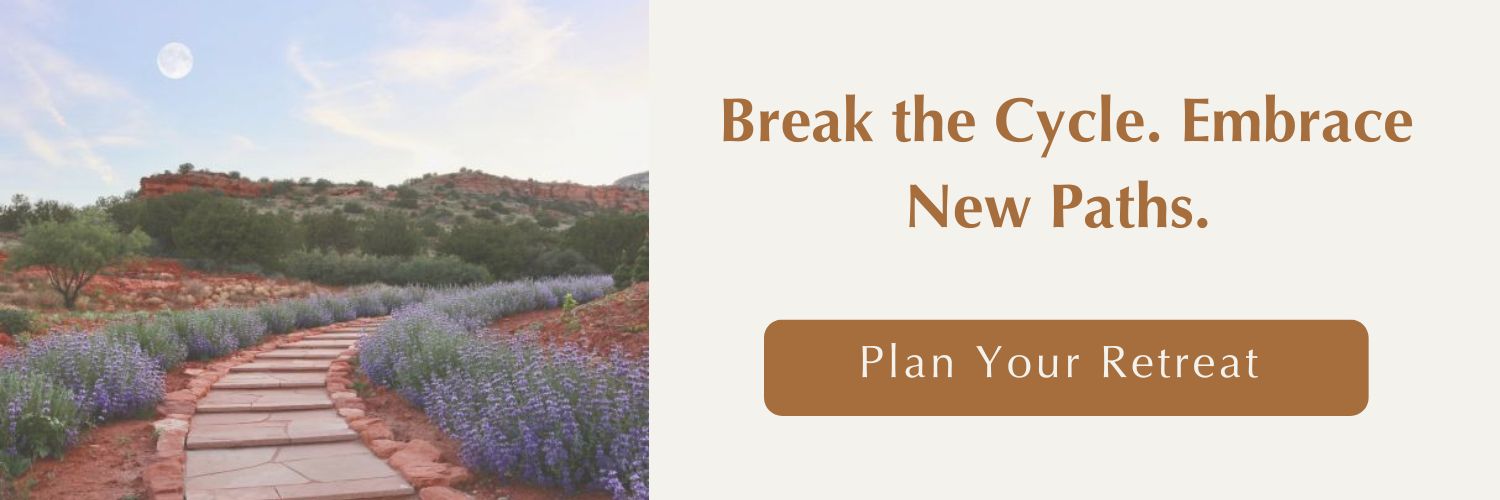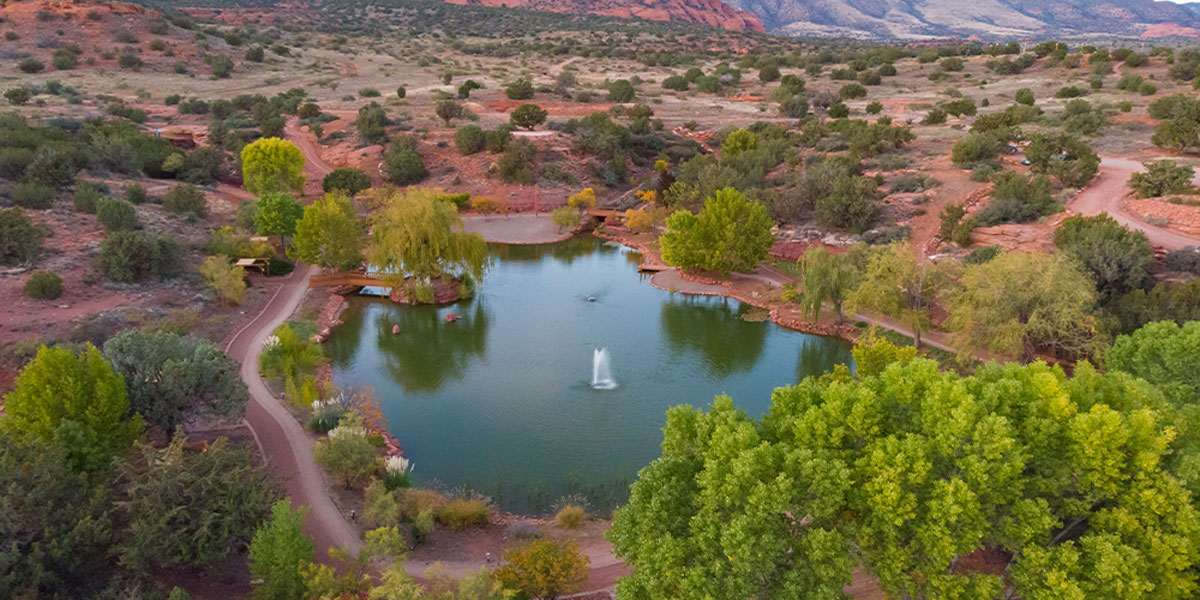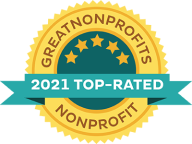How Retreats May Help Break Addictive Patterns and Support Mind-Body Renewal
Have you been trying to break an addiction in the midst of your busy, stressful daily routine? Are you discouraged about continuing to fail to fulfill your resolution to break off an unhealthy habit? Terminating an addiction is a significant feat that life sometimes seems determined to thwart you from achieving.
At Sedona Mago Retreat Center, we understand how life can pose considerable challenges. That’s why we exist. The place of retreat we’ve created is here for those who need life to slow down so they can catch up.
Read on to learn about how addictive patterns develop and how going on retreat can help you break these patterns to enjoy freedom in both body and mind.
Table of Contents
- How Do Addictive Patterns Develop?
- How Can Retreats Help With Addiction?
- 9 Retreat Practices That May Help You Break Addictive Cycles
- Sedona Mago Retreats: A Supportive Space and Community for Lasting Change
How Do Addictive Patterns Develop?
Addictive patterns develop when someone repeatedly turns to a behavior or substance, despite knowing it may cause harm. Strong urges or cravings may make the pattern feel hard to control, and a sense of short-term reward or comfort may dissuade the person from wanting to regulate it at all. Addictive patterns — if permitted to continue long enough — can take a significant toll on one’s physical, mental, or social well-being.
Sedona Mago Retreat Center is a place where those struggling with addictive patterns can restfully take stock of their circumstances and reestablish a positive approach to daily life. Call us today to learn about the environment we share with our clients.
Why Do Addictive Patterns Develop?
Several factors combine to contribute to the entrenchment of addictive patterns in someone’s life:
- Genetic: This is not a guarantee of developing an addiction, but rather an element that makes a person who engages regularly in substance use or unhealthy behaviors more likely to become addicted.
- Psychological: Stressful circumstances may tempt a person to cope with their negative emotions by seeking a high or an escape from reality. In addition, underlying mental disorders may make one more susceptible to addiction.
- Environmental: A person’s social environment is often a primary source of learned behaviors. It includes the kind of nurture one has received, community norms, available role models, and more.
Triggers
Triggers are emotional or physical occurrences that incite a person to engage in an addictive pattern. Whether a person encounters daily or less frequent triggers, they may be challenging to resist. Common triggers include:
- Feeling insecure in social situations
- Feeling sad, angry, bored, or lonely
- Being around people you used to engage in the addictive pattern with
- Times of the day or week you associate with the addictive pattern
- Returning to a location where you purchased or used an addictive substance
Reward Systems
Our brains are designed to reward us with feelings of pleasure when we fulfill a desire, such as for food or companionship. Unfortunately, the fulfillment of harmful desires, such as for addictive drugs, is also rewarded.
The “reward” comes from surges of different chemicals in our brain (dopamine, oxytocin, endorphins, serotonin, and GABA). The use of addictive substances is believed to cause a tenfold increase in dopamine levels, meaning the feelings of pleasure elicited by these substances dwarf those elicited by natural, healthy sources.
As the brain and mind become accustomed to this stimulation, a person builds a tolerance to the substance, requiring more of it to achieve the same level of reward. With chronic use, one may even experience negative symptoms during periods of abstinence, and the substance becomes increasingly challenging to forego. Thus, addiction sets in.
Behavioral addictions, such as gambling or viewing pornography, similarly play upon the body’s reward systems.
How Can Retreats Help With Addiction?
The reason addiction can so powerfully take hold of a person is that they are subject to a large degree to their life circumstances, to being beset with triggers, and to the entrapment of a reward system gone awry.
Retreat centers like Sedona Mago can help struggling individuals break out of these snares. Once a person is removed from the daily stressors, habits, and triggers that help keep addictive cycles going (which may require a period of detox), they can begin to fortify themselves against temptation.
Retreats help cultivate practices that enable people to notice urges, emotions, and patterns that may not be visible in their daily routine, but become evident when they actively work on mind-body awareness. Also, the structure of a retreat contributes to the kind of environment someone struggling with addiction can benefit from — a controlled, safe space where the introspection necessary for self-improvement can begin.
If peaceful, invigorating, and contemplative activities are not a part of your routine — for whatever reason — you might benefit immensely from experiencing them in the retreat setting.
9 Retreat Practices That May Help You Break Addictive Cycles
These are just a few among many helpful retreat practices that even those new to retreats can benefit from. Most people need to experiment with different practices to find the one that really works for them.
When you go on a retreat, don’t be shy about exploring the options available to you. For instance, Sedona Mago offers a wide variety of programs and activities, sure to include something that really hits home for you.
#1: Mindful Breathing and Meditation
Meditation that clears the mind and quiets the heart paves the way for more accurate insight into the thoughts, emotions, and energy that characterize you as a person and your experience of life.
Guidance on the principles of nothingness meditation is designed to help you develop a deeper sense of self and bring about a calmness that lasts beyond the retreat.
#2: Nature Immersion
Nature is specially equipped to induce peacefulness of mind and invigorate the body. The unique red sandstone rock formations in Sedona provide not only beautiful scenery but also a perfect setting for hikers. If you aren’t a hiker, you may discover here the wholesome power of this natural hobby that can take the place of behavioral addictions.
During our Relax and Recharge retreat, you may rest against the tranquil landscape or take advantage of the structures we offer, including orientation, tours, and healing activities.
#3: Yoga and Movement
A spiritual and physical practice combining mindfulness and meditation, deep breathing, and focused movements, yoga is an accessible activity for anyone seeking to cultivate deeper coherence between mind and body.
Studies have found that yoga offers value beyond mere physical exercise. It may help decrease anxiety and depression by stimulating the release of endorphins and GABA. Beyond that, it may contribute to positive brain rewiring. This could be the tool for reestablishing a healthy structure to a brain rewired by addiction.
#4: QiGong Practices
The goal of these practices, based on ancient Chinese medicine, is to reharmonize the mind and body by contacting and directing one’s qi, or life force. This is cultivated through active movements (such as martial arts and dance), meditation, and deep breathing, which help restore flow to blocked chakras, or energy centers, in the body.
The empowering QiGong practices taught at Sedona Mago can help fortify you to pursue holistic healing, from the inside out, so that addiction loses its hold on you.
#5: Self-Reflection
Knowing yourself is a powerful protection against self-harm — even the slow, insidious kind that addiction is. Suppose you have the time to reflect deeply on your character, purpose, and current trajectory in life. In that case, you may more accurately identify areas for improvement and adopt more constructive habits that promote true well-being. For example, given the space to reflect, you may learn to appreciate time spent away from technology and the peace of mind it fosters.
Sedona Mago’s intuitive reading program helps cultivate this kind of reflection, all against the uplifting backdrop of Arizona’s awe-inspiring landscape.
#6: Energy Accumulation Techniques
A person’s “energy” may be thought of as the combination of facets — physical, emotional, spiritual, etc. — that make up their identity and their potential. It may also be thought of as the life force emanating from them and connecting with the world around them.
Whichever way you look at it, it’s clear that if you are bound up with addiction’s negative energy, you may be lacking something vital to your flourishing as an individual. Supplying this lack can be done through energy accumulation techniques, some of which we have already discussed — such as yoga and QiGong. Another example is visiting energy vortexes, places believed to be where the earth’s energy is intense enough to affect the energy of individuals who visit.
Sedona is home to several of these. People who experience the vortexes firsthand testify that a spiritual connection is made that brings about emotional healing, clarity, and empowerment, all valuable weapons for the person combating addiction.
#7: Creative Expression
Expressing yourself creatively can provide stepping stones toward addiction recovery. Creative expression’s power to transform the mind consists in its gentle demands for careful, honest thought.
While some forms of creative expression — such as writing — help people clarify thoughts, process emotions, and learn coping skills, others primarily serve as a positive alternative to addictive patterns. Both can help improve your self-esteem and redefine your identity apart from unhealthy substances or behaviors.
#8: Joining a Community
Being a part of a community is one of those essentials for human flourishing. But the best community is one that has your interests at heart. Befriend people who are committed to the things that make for a healthy mind and body.
Positivity, encouragement, compassion — all these will help strengthen your hand against addiction. You, in turn, will be a valuable asset to your community in your own special way. As you share sorrows and joys with others, you will begin to understand better your worth and the importance of your steadfastness against addiction that could snuff out your good influence.
#9: Spiritual Healing
Do you keep getting shortchanged by addiction? Do you exert a lot of time and effort for diminishing returns? If so, you likely suffer frequent disappointment, perhaps even cognitive dissonance, and the inevitable dread that something precious to you will eventually have to give if your addictive pattern continues.
These experiences characterize a spiritual state in need of liberation. Chakra healing seeks to provide help in this regard by teaching you to balance the seven centers of energy (chakras). Balanced energies contribute to a real, lasting sense of tranquility that addictive substances and behaviors cannot supply.
Sedona Mago Retreats: A Supportive Space and Community for Lasting Change
Sedona Mago Center for Well-Being and Retreat’s programs may be the first necessary step in detaching you from an addictive pattern. Don’t let the opportunity slip by. While your efforts toward sobriety will continue beyond the dates of your retreat, the program(s) you choose can teach you practices and habits of positive presence that keep addiction from sinking its teeth into you again.
Contact us today to book your retreat and begin to experience the life-preserving effects of structured leisure and natural beauty in Sedona, AZ.
Recent Posts





